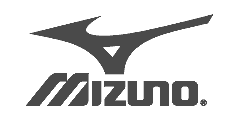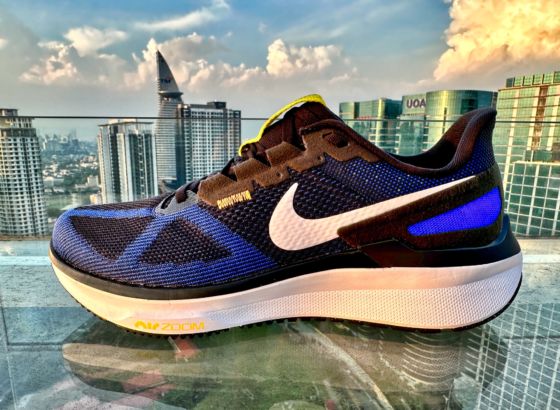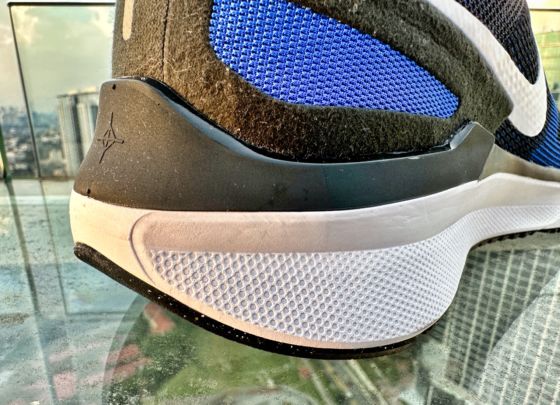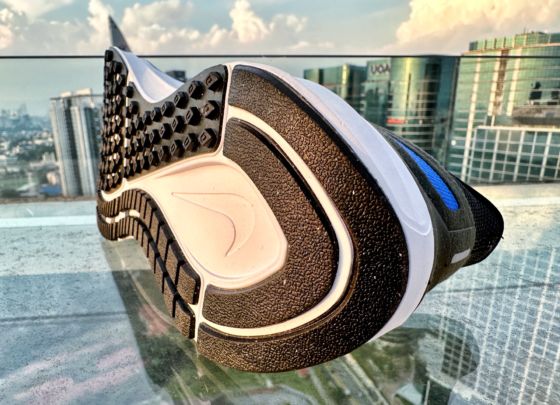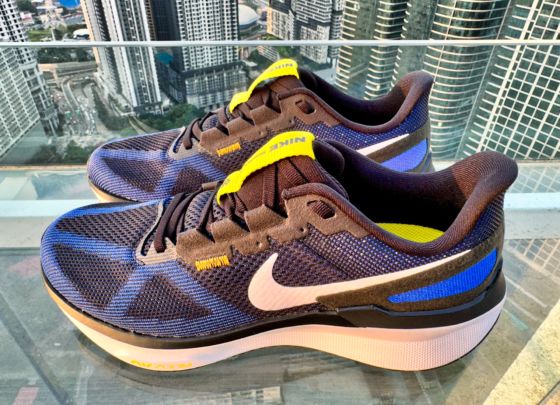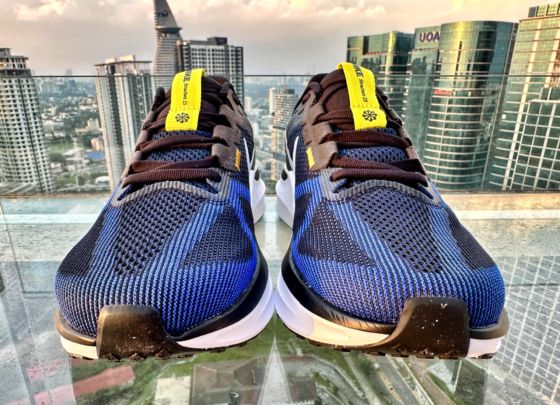Nike Structure 25 review
Nike Structure 25 Verdict
The pros
- More supportive than previous versions
- Upper feels warm
- Tough outsole
- Great traction
The cons
- Poking arch sensation if you have flat feet
- Lumpy forefoot from the airbag
- Firmer ride
Rating breakdown
Facts / Specs
Size/Fit
Cushioning & ride
Usage
Who should buy the Nike Structure 25 ?
If the Pegasus 40 is too unstable for you or the Infinity RN4 is too expensive, the Structure 25 is a good option.
Who should not buy the Nike Structure 25 ?
If you want a supportive, neutral trainer that doesn’t feel like a stability shoe, do not get the Structure 25.
Nike Structure 25 Introduction


It was not so long ago that Nike got rid of the Structure series completely and tried to push everyone towards the Infinity Run series, their stable neutral trainer. They must have realised that there was still a demand for a stability trainer because after a couple years without the Structure, they came back with the vastly different Structure 23.
The Structure 23 felt like a supportive neutral trainer, not a “true” stability trainer. I reviewed both the Structure 23 and 24 (the 24 was only an upper update). I found them to be the best versions of the Structure to date because they felt stable and supportive without the firm ride or poking arch sensation that you normally associate with stability trainers.
When it comes to popularity, the Structure series comes nowhere near the likes of the Pegasus or the Infinity. I personally prefer the Structure to both the Peg and the Infinity because its upper is more padded and the cushioning feels more substantial but I think that most runners still think the Structure is an old school, traditional stability trainer.
Last year there was no Structure update but this year, we get a completely redesigned version. The new version weighs 0.2 oz (6 g) less than the Structure 24. It measures 37 mm in the heel, 27 in the forefoot and it still costs $120, which is now cheaper than the average mid-range daily trainer.
Nike Structure 25 First Impressions


When I walked around in the Structure 25 for the first time, it was noticeable how much more it felt like a stability trainer than the last 2 versions. There was a prominent arch sensation which wasn’t there since the Structure 19 but it wasn’t painful or uncomfortable.
My first run was a hill sprints workout. The Structure 25 felt a bit sluggish during that run- it didn’t enjoy picking up the pace. It felt firmer than the Structure 24 but it also felt more supportive due to the raised section of the midfoot at the arch.
I could feel the airbag under the forefoot which has always been a characteristic of the Structure series. It was comfortable right out of the box and didn’t need any break in period.
The shoe that it reminded me of most was the Infinity Run 3. Both shoes have heel clips as well as prominent arches but the Structure 25 felt firmer than the Infinity Run 3.
It also reminded me of the Pegasus 40 because they both have forefoot Zoom airbags with firm rides and hard outsoles.
Nike Structure 25 Upper


The Structure 25 has a traditional, padded upper which is comfortable but warm. It feels a little but less padded than the Structure 24 but it’s still more suited to cool climates than tropical ones. I find it to be really comfortable, so comfortable that I wear it out casually.
The padded tongue is not gusseted so there is some slight tongue slide but it’s not annoying. Double first row eyelets are provided but I never used them because lockdown is excellent without needing a runner’s knot.
It has a true to size fit which is on the narrow side, like most Nike running shoes and it feels best when I wear thin socks with it, otherwise it feels too warm.
Nike Structure 25 Sole Unit


The Structure 25 has a very predictable ride comparable to that of the Pegasus and Infinity series. From the moment you put it on, it feels familiar and you can tell immediately that you’re wearing a Nike Zoom Air trainer.
The midsole foam has been changed to Cushlon 3.0 but it’s nothing special and it feels like a foam from 6 years ago. There’s no high level of bounce or energy return so the Structure 25 doesn’t feel particularly fun or engaging.
It performs best at slow paces below 5:30 minutes per km. I find it difficult to pick up the pace in it so I don’t use it for any uptempo runs. I definitely wouldn’t call it a versatile trainer.
The ride is firm by today’s standards. The airbag under the forefoot is quite firm so the surrounding foam has to be of a similar density or else the airbag will be too prominent and will feel uncomfortable.


When it comes to support, the Structure 25 is currently the most supportive trainer in the Nike lineup. I’m a mild overpronator with flat feet and I find it stable but the prominent arch is a bit too overbearing. I think it will provide enough support for most overpronators but it’s more suited to runners with high arches.
A new heel clip adds an extra element of heel support to this year’s Structure. This is a feature that we’ve seen on the Infinity Run series for many years. This year’s InfinityRN 4 doesn’t have it anymore.
Nike advertises that the Structure 25 has a rocker geometry but in reality, the forefoot is just too flexible for you to feel the rocker. It doesn’t feel energy-saving or efficient during long runs so I prefer using it for short or middle-distance runs.
I did one 42 km training run in it but I didn’t enjoy that run. The shoes felt heavy and sluggish, and I felt like I was working a lot harder than in other, more modern trainers with jumbo thick midsoles.
Like most Nike daily trainers, the outsole of the Structure 25 is its main strength. It consists of full ground contact, thick rubber which is hard-wearing and durable. It has protruding lugs so grip is great, even when it’s raining heavily.
Nike Structure 25 Conclusions


I know what Nike is trying to do with the Structure 25 and the latest InfinityRN 4: they want to push runners who need support away from the InfinityRN to the Structure and vice versa.
The Structure 25 is more of a stability trainer than the 2 previous Structure versions. It has an extra heel clip, more arch support and it also has a firmer ride which results in less lean bias.
I prefer the Structure 24 because I’m not a fan of prominent arches in running shoes. The Structure 24 felt like more of a neutral shoe which was supportive. The 25 feels like a stability trainer.
The Structure 25 won’t be staying in my rotation. It’s a decent running shoe with a good price but I’m not a fan of the prominent arch because of my flat feet. I prefer other stability features like a wide base or a plate. I also find that it has a flat, boring ride like a shoe from 6 years ago.
The Structure series needs to be upgraded with a thicker midsole and Nike’s premier midsole foam, ZoomX. This will give it a more engaging, exciting ride.
How does the Structure 25 compare?
Why you can trust us
As editorial policy, we do not accept free samples from companies.We purchased this pair of Nike at Nike with our own money.
This page contains affiliate links. As an Amazon Associate we earn from qualifying purchases. Read more about our policy.
Reviewed by Brandon
Brandon is a South African who lives and trains in Malaysia. He is a marathon runner who eats, sleeps and dreams running shoes. While most people wear shoes to run, he runs to wear shoes.
User feedback (0)
Similar shoes to Nike Structure 25


Nike Infinity RN4 Review








